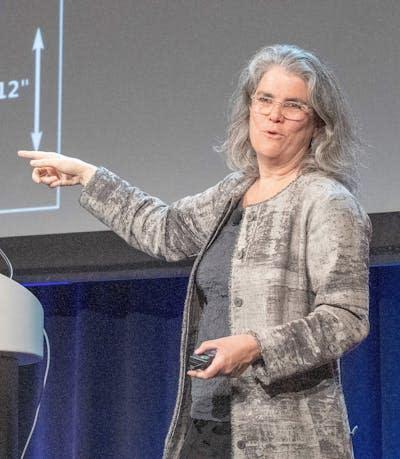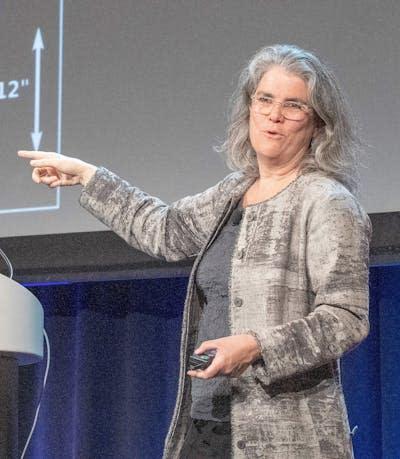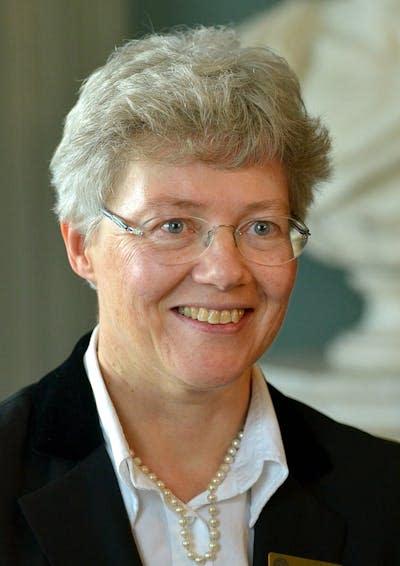Of the 225 people who have been awarded the Nobel Prize in Physics, only five are women. This is a very small number, and certainly less than 50% - the percentage of women in the human population.
Despite several studies exposing the barriers for women in science and many efforts to increase their representation, physics remains a male-dominated field. Only 1 in 5 physicists are women, a number that has not changed since 2010.
Three of the five Nobel Prizes in physics awarded to women occurred in the past decade. As a female physicist, it is extremely exciting to see three women join the ranks of Nobel laureates in physics within a handful of years.
Nobel Prize-winning work
The three female physicists to receive the Nobel Prize in the 21st century are Donna Strickland, who won in 2018, Andrea Ghez, who won in 2020, and Anne L'Huillier, who won in 2023. All three have made important contributions to science.
Strickland, a physicist from the University of Waterloo, won the prize for her work on lasers, implementing a method called chirped pulse amplification.
Ghez, a UCLA astrophysicist, received the Nobel Prize for her work observing stars, especially those near the center of the Milky Way.
L'Huillier, a physicist from Lund University, received the 2023 Nobel Prize, also for her work with lasers.
What are some common threads in their lives?
Being a minority in a research field is not easy. It's a huge achievement to last long enough to have a legendary career like the three winners. Since winning the prize, the three winners have talked about their research journeys in various interviews and offered advice to the next generation of physicists. I've noticed some commonalities.


A career in academia takes a long time. All three women emphasize the time it takes to go from the first steps in their research to recognition by the Nobel Committee. L'Huillier calls it a long journey.
While winning a Nobel Prize may bring some glamor and fame, this career may not be the right profession if you're looking for a quick reward. It now takes an average of 28 years between publishing a discovery and receiving a Nobel Prize in physics.
You can't predict which fundamental scientific topic will lead to a Nobel Prize - nor, for that matter, which one will ultimately have any impact. The best thing a physicist can do early in their career is explore different topics, try new things, delve into discomfort, and find something they are passionate about.


All three women talk about how often they got into trouble. Before Strickland got the chirped pulse amplification method to work, she began to wonder if she would ever get a PhD because she had gone down so many dead ends. The first time Ghez proposed the project that would lead to her celebrated work, she was rejected.
All three thought about quitting at some point. So don't be discouraged if you are rejected or if others say you can't do it.
"Continue," says L'Huillier. "You have to be stubborn."
Ghez recommends viewing experiments that don't work not as failures but as opportunities.
Movies and TV shows paint a picture of the scientist as a social outcast, an individual who works alone in the laboratory. But it doesn't work that way. All these women work in teams.


"Science is a team sport. You have to know what you don't know and seek help for what's missing," Strickland says.
Seeking help often leads to collaborations with other research groups. As Ghez puts it: "Science is a very social enterprise."
And above all, the three medalists cited luck as an essential ingredient for success. The world is full of physicists who are just as dedicated and just as smart and who don't get the Nobel Prize.
Themes specifically for women
Strickland, Ghez and L'Huillier are always asked about their experiences as women in science and their views on diversity and equality in physics. They all emphasize the importance of diversity.
The three laureates have recognized how crucial female role models have been in their lives. To believe that a career in physics is even possible, you have to see people in the field who look like you.
They also mention the importance of a support network, especially for women. When you feel discouraged, it can help to have a group of people you trust to encourage you.
The three women also talk about their experiences in combining work and life. It's not always easy.
Strickland left the standard academic path after a postdoctoral fellowship to become an engineer so she could be close to her husband and raise her family. L'Huillier left her job and moved from France to Sweden, where she was unemployed for a while. Ghez waited years to have children. There is not one route. But some time away from research can give you new perspectives and inspiration to take the next steps.
They also explain how diversity enriches the research itself. A team that is open to different points of view is more creative. It is also more fun to work in.
These women have pointed out that the culture for women in science has improved over their careers and they are optimistic about the future. If you calculate the percentage of Nobel Prizes in physics awarded to women in the last decade alone, about 1 in 10 Nobel laureates were women. To me, this indicates that things can indeed get better.
And perhaps the Nobel Committee is addressing, at least in part, possible gender inequality in their processes. For example, the lack of nominations of women and the influence that stereotypes can have on their evaluations. I therefore await this year's announcement with great anticipation.
This article is republished from The Conversation, an independent nonprofit organization providing facts and trusted analysis to help you understand our complex world. It was written by: Filomena Nunes, Michigan State University Read more: Filomena Nunes does not work for, consult with, own shares in, or receive funding from any company or organization that would benefit from this article, and has disclosed no relevant affiliations beyond their academic appointment.